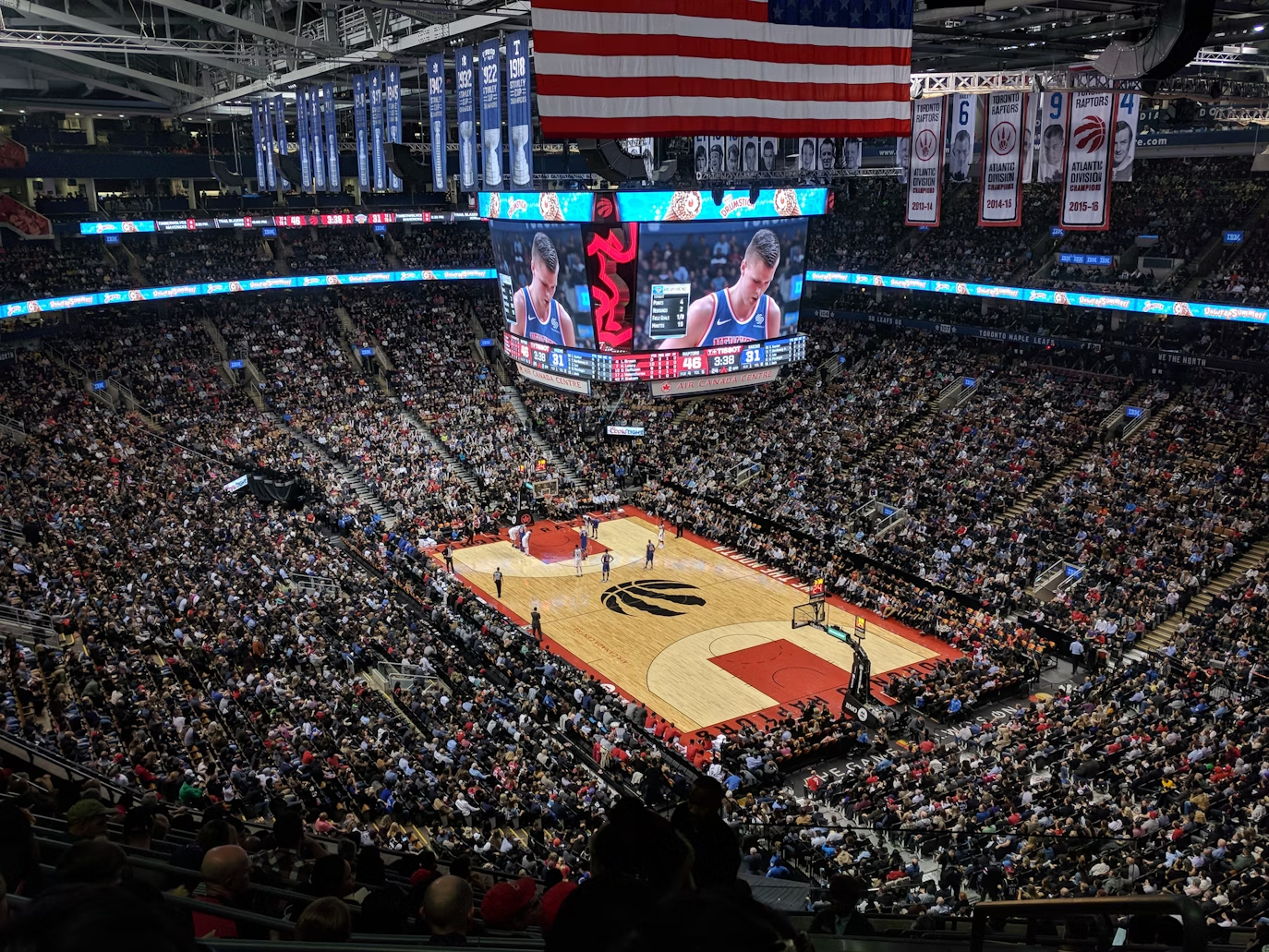
Sporting events are no longer just about watching the game or match. Over the past decade, technology has transformed fan experiences at sports venues, making them more immersive, interactive, and enjoyable. This article explores how technology is revolutionizing every aspect of the fan journey, from ticketing to concessions to engaging with other fans.
Creating Immersive, Multi-Sensory Spaces
Modern sports venues are embracing advanced technologies to provide a richer “return on experience” for fans, justifying the rising ticket prices. From the moment fans enter the venue, they are greeted with digital walls and interactive displays that engage them in unique ways.
Examples of Immersive Technologies:
- Dell Interactive Wall: At the Moody Center Arena in Austin, Texas, fans can interact with a 70-foot digital, Lite Brite-inspired wall. This playful experience allows fans to capture fun moments before, during, or after their event.
- Large Media Canvases: These flexible digital setups can change dynamically, converting a space to match the event’s energy, whether it’s a basketball game or a music concert.
These integrations not only enhance fan engagement but also help generate additional revenue by keeping fans entertained longer, thereby increasing dwell time and related spending on food and merchandise.
Enhancing Operational Efficiency
One of the key benefits of integrating technology into sports venues is the improvement in operational efficiency. With better management of ticketing, security, and concessions, the overall fan experience becomes smoother and less stressful.
Operational Benefits:
- Real-Time Data Utilization: Technology can direct fans to less crowded concession stands, reducing wait times and congestion. For instance, if four out of six stands are too busy, real-time data can guide fans to quieter ones.
- Connected Ecosystems: By creating a connected digital environment, venues can provide seamless experiences. This system also benefits operators by offering valuable insights through data analytics, helping them to understand traffic patterns and fan interests better. With advancements in real-time data utilization and connected ecosystems, the 2024 odds are favorable for sports venues aiming to streamline operations and enhance the overall fan experience.
Facilitating Social and Community Experiences
Another significant advancement is the technology’s role in extending the fan experience beyond just the game. Fans now seek more from their visits, expecting a communal and interactive experience.
Extending the Experience:
- Pre- and Post-Event Engagement: Modern venues provide various activities that engage fans before and after the main event. Whether it’s visiting a themed club or participating in interactive social media walls, the experience now stretches well beyond the game.
- Sports-Anchored Entertainment Districts: These districts are becoming increasingly popular, offering fans additional places to congregate and engage with one another. In the future, augmented and virtual reality extensions could allow broader audiences to participate, even if they are not physically present at the event.
Adapting Local Culture and Community
Local affiliation is a crucial part of the connection between fans, the venue, and the team. Emphasizing local culture makes the event experience more memorable, whether fans are local or have traveled long distances.
Integrating Local Elements:
- Food and Drink Choices: Offering local food and beverages creates a unique local experience. At the Moody Center, fans can enjoy locally brewed beers and wines, reflecting Austin’s vibrant culture.
- Artwork and Design: Venues often feature murals and artwork by local artists, further embedding the local culture within the fan experience.
Blending Advertising and Fan Engagement
While advertising and sponsorship are inevitable aspects of modern sports venues, technology helps make these integrations seamless and less intrusive.
Smart Advertising Strategies:
- Dynamic Digital Canvases: Instead of static vinyl wraps, digital canvases offer flexible advertising options that can be changed dynamically. This creates a fresh and engaging environment for fans, without overwhelming them with too many visual elements.
- Sponsorship with Purpose: Choosing sponsorships that align with the venue and team’s values helps in maintaining a cohesive and enjoyable atmosphere. For example, featuring local restaurants or breweries over national chains can increase fan spending and satisfaction.
Conclusion
Technology is not only enhancing the fan experience at sports venues but is also reshaping how we interact and engage with live events. From immersive digital experiences to streamlined operations and deeper community ties, the integration of technology offers multiple benefits for fans and venue operators alike. As we look to the future, the evolution of sports venues will continue to be driven by innovative technological advancements, making every visit a memorable experience.
In a competitive landscape where attending a live event might cost a significant amount, offering a high “return on experience” has never been more critical. It’s not just about witnessing the game anymore; it’s about immersing oneself in a technological marvel that keeps fans coming back for more. Whether it’s leveraging real-time data to ease congestion or creating a community hub within the venue, these advancements are setting new standards for what fans can expect in 2024 and beyond.
Meta Description:
Explore how technology is transforming sports venues, creating immersive, interactive, and seamless fan experiences from ticketing to engagement.
